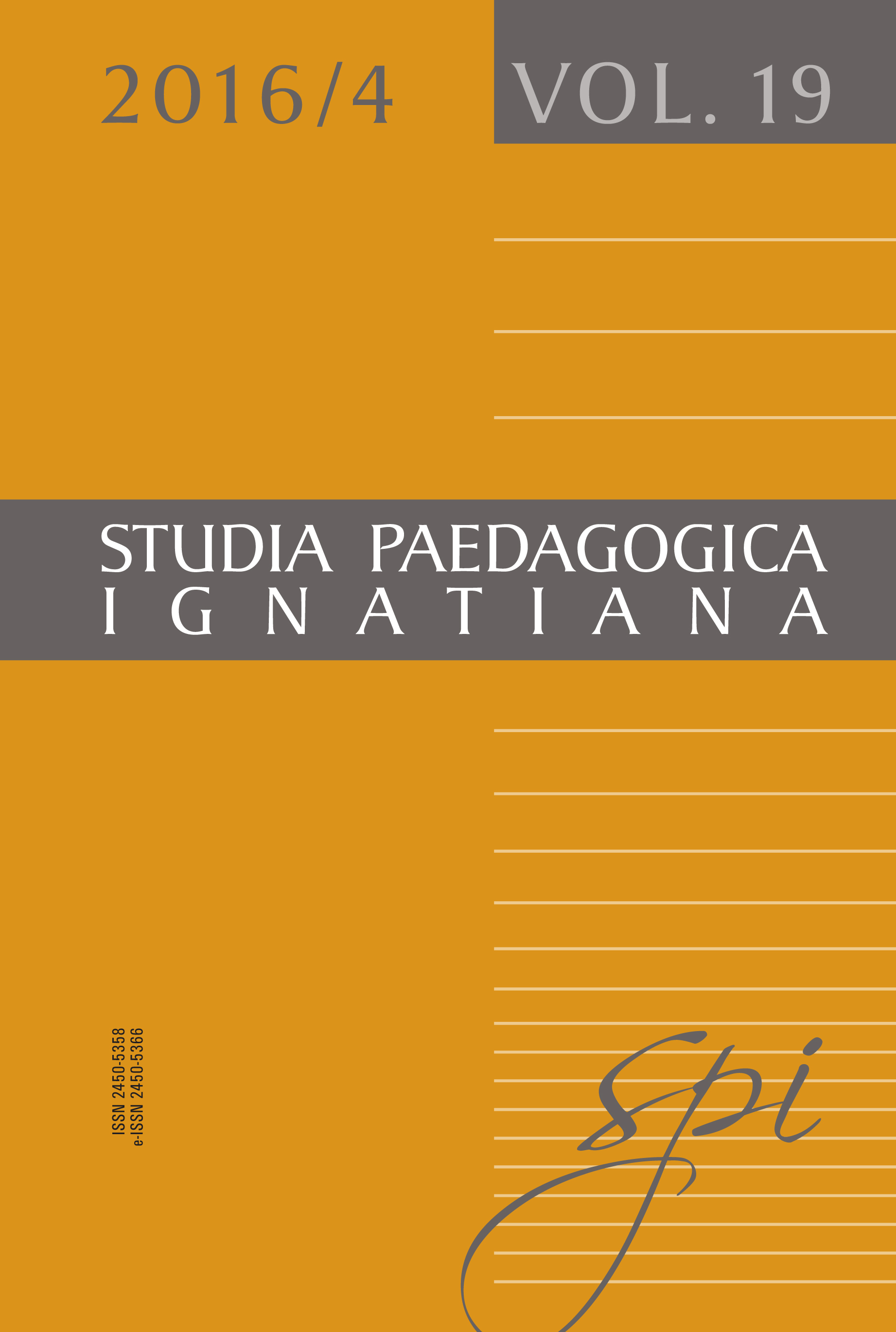Liquid Identity or Multiple Identities of Young People?
Liquid Identity or Multiple Identities of Young People?
Author(s): Joanna Juszczyk-RygałloSubject(s): Social Sciences, Education
Published by: Uniwersytet Ignatianum w Krakowie
Keywords: identity; personality; adolescence; society; development of identity; media education
Summary/Abstract: Identity is commonly understood as the process of creating an image of oneself. It is, similarly to personality, a psychical disposition which is acquired in the course of experiencing reality. Unlike personality, identity is not passively shaped by the environment, but each individual has a significant impact on the development of his or her own identity, so that the person can consciously distinguish oneself from other people in the group. On the one hand, constructing identity is the way a pupil looks for the most optimal environment for one’s development, and on the other hand, acquired identity determines the logic of this person’s behaviour. The period of adolescence is especially crucial for the development of identity as it is then that a young person faces new ways to participate in the world. Experience of the world through new media has a huge impact on identity, which is formed on the basis of some points of reference. These points of reference are mainly role models popularized by media. The high speed of the changes in social life results in similarly rapid alteration of identity. In liquid reality we can observe also liquid identity, which is accommodated to current social needs. It is characteristic that participation in Internet communities is the impulse for the creation of many network identities, which are selectively used in various situation. A phenomenon that may be described as the existence of multiple identities results in the fact that young people have difficulties in being aware of their own identity as well as in understanding themselves and their personality. As a result, it causes frustration, uncertainty and a feeling of being lost. Consequently, it can lead to chaos in thinking and acting. Therefore, media education aims at preventing these alarming phenomena. Studies were conducted that aimed at placing identity in social and cultural context and they permitted the question of whether a contemporary pupil was able to define himself on his own and describe his own identity to be addressed. In other words, the question was: Can a pupil cope with the process of creating the picture of oneself through experiencing reality? The research goal of this article is to analyze the personality structure of identity and, based on its background, to answer the question what is its impact on possible identity changes in current social conditions. However, the answer, which is important for educators, is not explicit and it rather implies that changes of identity may occur in two ways: as slow and smooth or abrupt and multiple. Bearing in mind that current pedagogy goes beyond its own framework and it more and more often also uses psychological tools, the article follows such a perspective and presents all dissertations, which concern the problem of searching and creating liquid identity and multiple identities, in the broader context—as the digital intermediation of social structures.
Journal: Studia Paedagogica Ignatiana
- Issue Year: 19/2016
- Issue No: 4
- Page Range: 119-137
- Page Count: 19
- Language: English

